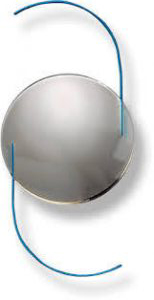


Are cataracts beginning to interfere with your vision? If they are, it may be time for cataract surgery.
Selecting the intraocular lens or IOL for your procedure is a critical decision you have to make beforehand. One of the most exciting IOL options is the newest advancement in ophthalmology, the light adjustable lens or LAL.
It is a highly advanced IOL, and gives you the most refined vision possible after cataract surgery! Eye Physicians of Long Beach was one of the first practices in the United States to use the LAL.
Now we routinely use it to provide exceptional cataract surgery results. It allows us to work with you to customize your eyesight.
Cataracts grow in the natural lenses of your eyes. They usually begin to form in your forties but won’t impact your vision for decades.
When they begin to make your daily life difficult, it’s time for cataract surgery.
Cataracts cause your natural lenses to become cloudy and white. The white coloring becomes so thick that light can longer pass through to your retina.
They result from proteins in your lenses breaking down and clumping together. Because this breakdown happens in your lens, not on top of it, you need to take the lens out and replace it.
That’s what cataract surgery does. It removes and replaces your natural lens with an intraocular lens or IOL.
IOLs give you your eyesight back after cataract surgery. They work with your cornea to focus light onto your retina.
Some IOLs can even compensate for refractive errors like astigmatism. Because of its customizability, the LAL can correct astigmatism.
The light adjustable lens or LAL is the only FDA-approved adjustable lens for cataract surgery. It is like a regular IOL that gets placed in your natural lens’ membrane.
What makes it different is that it is adjustable when it is in your eye. It is impossible to alter any other IOL after cataract surgery.
The LAL contains photosensitive material that changes shape when UV light hits it. Altering the LAL’s shape like this changes how it refracts light onto your retina.
This customization allows you to experiment with various settings in the LAL. Then when you find one you like, you can set it in the lens forever.

After your cataract surgery, you go home to rest and relax. If UV light from the sun hits the LAL, it can change its shape and alter your vision.
After cataract surgery with the LAL, you have to wear UV protective glasses to prevent this. You can stop wearing the glasses after you have set your permanent vision settings.
Two to three weeks after cataract surgery, you have your first light treatment. Light treatments happen in your eye doctor’s office and take minutes.
Three days after this initial light treatment, you have your second. If necessary, you can have a third adjustment three days after that.
During these light adjustments, your eye doctor shines UV light onto your LAL to change its shape. When your vision is comfortable and precise, they stop, and you can test it for a couple of days.
By the end of the treatments, your vision should be near-perfect. When it is, your eye doctor locks it in with a different light that prevents the LAL from changing further.
Then, you can enjoy this fantastic new eyesight for the rest of your life. Cataract surgery gives you your sight back after cataracts have taken it from you.
Cataract surgery with the LAL gives you custom eyesight. This customization results in superior sight for you after cataract surgery.
Is it time for you to have cataract surgery? Schedule a cataract screening at Eye Physicians of Long Beach in Long Beach, CA. Come discuss custom vision with the light adjustable lens.